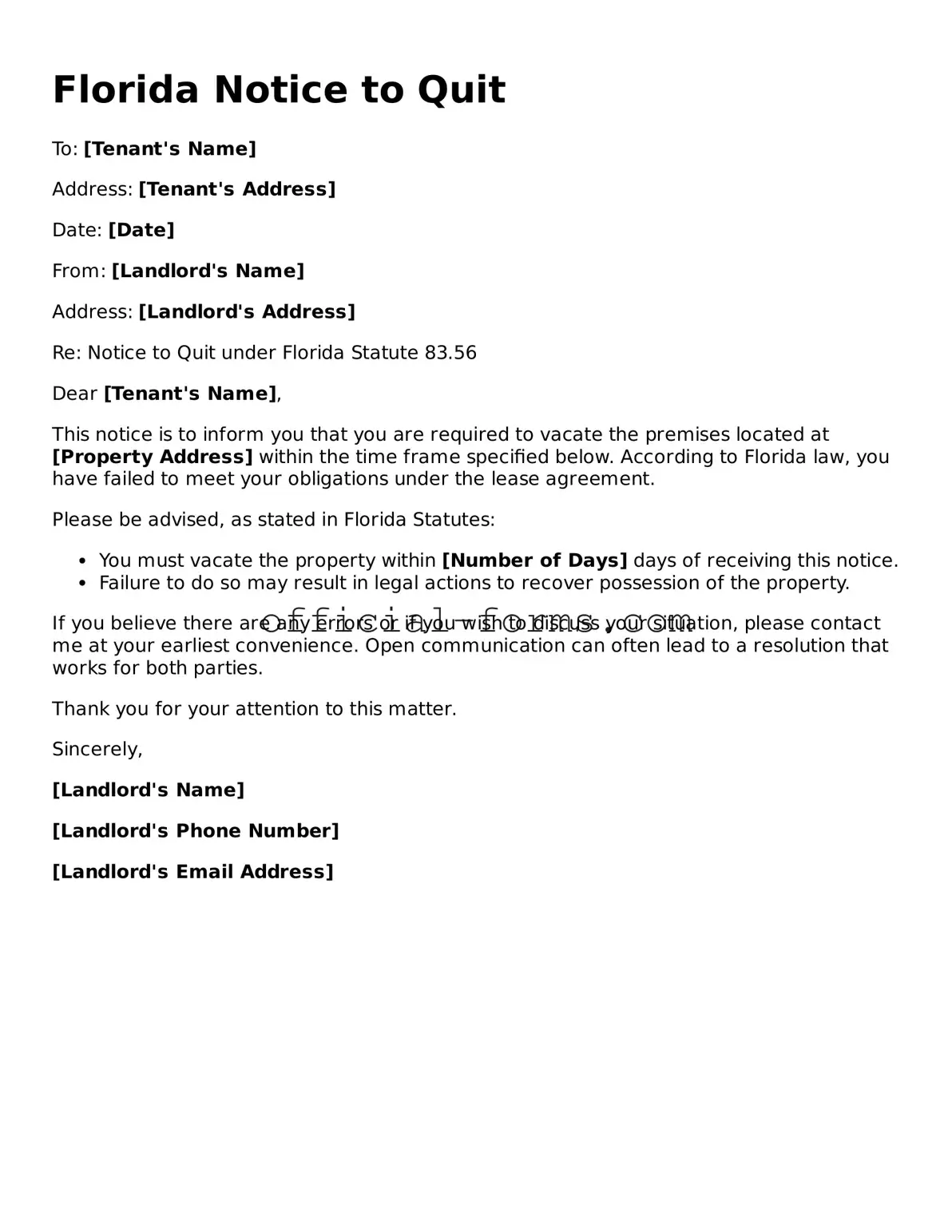Filling out the Florida Notice to Quit form can be a straightforward process, but many people make common mistakes that can lead to complications. Understanding these errors can help ensure that the notice is valid and effective.
One frequent mistake is failing to include the correct date. The date is crucial as it establishes the timeline for the tenant to vacate the premises. Without a specific date, the notice may be deemed invalid, causing unnecessary delays.
Another error is not providing the tenant's full name. Using nicknames or abbreviations can create confusion and may prevent the notice from being legally recognized. Always ensure that the tenant's name matches what is on the lease agreement.
Additionally, some people forget to specify the reason for the eviction. Florida law requires that the notice clearly states the grounds for termination. Omitting this information can weaken the case and may lead to challenges in court.
Improperly addressing the notice is also a common mistake. The notice should be sent to the tenant at the address where they reside. Sending it to an incorrect address can result in the tenant not receiving the notice, which can complicate the eviction process.
Many individuals neglect to sign the notice. A signature is a vital part of the document, as it signifies the sender's intent. Without a signature, the notice may lack authenticity and could be dismissed in legal proceedings.
Another mistake is not keeping a copy of the notice for personal records. Documentation is essential in any legal process. Having a copy can serve as proof of the notice being sent and can be useful if disputes arise later.
Some people also fail to follow the proper delivery method. Florida law allows for several ways to deliver the notice, including personal delivery, certified mail, or posting on the property. Choosing an improper method can lead to challenges in proving that the tenant received the notice.
Finally, many individuals do not understand the timeframes involved. Each type of eviction notice has specific time requirements. Ignoring these timelines can result in the notice being ineffective, prolonging the eviction process unnecessarily.
